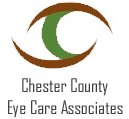Dry Eye Can Now Be Treated With IPL Therapy, Say Chester County Ophthalmologists
Originally Developed for Use in Dermatology, Intense Pulsed Light (IPL) Therapy Can Now Be Used to Help Treat Dry Eye Syndrome and Alleviate Associated Symptoms, According to Drs. Bruce I. Stark and John J. DeStafeno of Chester County Eye Care Associates
WEST CHESTER, PA--(Marketwired - Apr 14, 2014) - A recent study from Ophthalmology1 found Americans who live in cities with a high level of air pollution, including New York City, Chicago, and Los Angeles, have the greatest risk for dry eye syndrome. In addition to environmental conditions, such as poor air quality and atmospheric pressure, dry eye can be caused by age, hormonal changes, and certain medical conditions, says West Chester LASIK surgeon John J. DeStafeno, MD. For the nearly five million Americans who suffer from dry eye, one of the latest, most effective ways to treat the condition is through Intense Pulsed Light (IPL) therapy, he adds.
Dry eye syndrome, or DES, is a condition in which the eye does not produce a sufficient amount of tears to moisturize and nourish the eye, resulting in itchy, red eyes, a burning or gritty sensation, and sometimes blurred vision. As a light-based therapy, IPL works by targeting the abnormal blood vessels in the eyelids and skin responsible for eyelid inflammation and meibomian gland dysfunction.
"If these glands do not produce an olive oil-like secretion, the tears tend to evaporate and produce the symptoms associated with dry eye," says Dr. Bruce I. Stark, an ophthalmologist at Chester County Eye Care Associates. "The IPL superheats the meibomian glands behind the lashes so that the clogged glands can be opened up. This allows for the formation of oil secretions which improves the tear film quality, so there is reduced evaporation of the tear film."
In a recent blog post titled, "Intense Pulsed Light: The Latest Treatment for Dry Eyes," Drs. Stark and DeStafeno explain that IPL originated for dermatological use to correct sun damage, tiny blood vessels, and other skin conditions. However, when an ophthalmologist treating his rosacea patients found that many who had dry eye noted improvements in their symptoms, the potential for IPL to treat dry eye syndrome was discovered.
According to Dr. Stark, IPL therapy presents an effective solution for dry eye because of its ability to treat one of the underlying causes of the condition, or the meibomian glands. "Almost all IPL candidates have been on intensive artificial tear supplements, topical or oral antibiotics, tear producing eye drops such as Restasis, have had punctal plugs placed in their tear ducts, or have used fish oil and warm compresses, but still have persistent symptoms," he says. "IPL is the only light based approach that directly addresses the skin's gland component of dry eye."
Each IPL treatment is fairly quick, requiring only 10 to 15 minutes, notes Dr. DeStafeno. As another added benefit, IPL is widely considered to be a non-painful procedure, and it typically requires little to no recovery time. For best results, Dr. DeStafeno says three to four treatments, four to six weeks apart are recommended, followed by maintenance treatments once or twice a year.
For patients experiencing symptoms of dry eye syndrome, Dr. DeStafeno says visiting their ophthalmologist for a complete evaluation is very important. Eye care professionals can elicit an environmental and/or medical history to help patients determine an effective and individualized course of treatment.
About Bruce I. Stark, MD
Dr. Stark graduated cum laude from Brandeis University and earned his medical degree from the University of Michigan. He completed his residency training at Wills Eye Hospital in 1982 where he currently serves as an Assistant Surgeon. Dr. Stark also educates fellow ophthalmologists as a clinical instructor at Thomas Jefferson University hospital. He is a board-certified ophthalmologist and has more than 25 years experience in the diagnosis and treatment of numerous eye disorders such as diabetic retinopathy, retinal tears, and glaucoma. Dr. Stark is also the head of Chester County Eye Care Associates's Center for Rejuvenations, where he performs a thorough range of cosmetic procedures such as eyelid surgery (blepharoplasty), BOTOX® injections, and laser skin resurfacing. Dr. Stark is available for interview upon request.
About John J. DeStafeno, MD
Dr. DeStafeno graduated summa cum laude from Siena College and earned his medical degree from Albany Medical College. He is a specialist in cataract, cornea, and LASIK surgery, and is a certified surgeon for the VISX™ Excimer laser, the Wavelight® Allegretto Excimer laser, and the IntraLase™ laser. Also a researcher in clinical study, Dr. DeStafeno has contributed to the advancement of understanding cataract surgery and corneal diseases, and was recognized by the American Society of Cataract and Refractive Surgery. Dr. DeStafeno is available for interview upon request.
For more information about Dr. Stark, Dr. DeStafeno, and Chester County Eye Care Associates, visit chestercountyeyecare.com or facebook.com/ChesterCountyEyeCare.
1Galor A, Kumar N, Feuer W, Lee DJ. "Environmental Factors Affect the Risk of Dry Eye Syndrome in a United States Veteran Population." Ophthalmology. In Press February 2014.
To view the original version of this press release, click here: http://www.chestercountyeyecare.com/blog/news-room/dry-eye-can-now-be-treated-with-ipl-therapy-say-chester-county-ophthalmologists/.
Contact Information:
Chester County Eye Care Associates
Exton Office:
Commons at Oaklands
740 West Lincoln Highway
Exton, PA 19341
(610) 696-1230
West Chester Office:
Fern Hill Medical Campus
915 Old Fern Hill Road
Building B
Suite 200
West Chester, PA 19380
(610) 696-1230
West Grove Office:
So. Chester County Medical Center
Medical Office Bldg. 1
Suite 203
1011 West Baltimore Pike
West Grove, PA 19390
(610) 696-1230
Rosemont Media
(858) 200-0044
www.rosemontmedia.com
